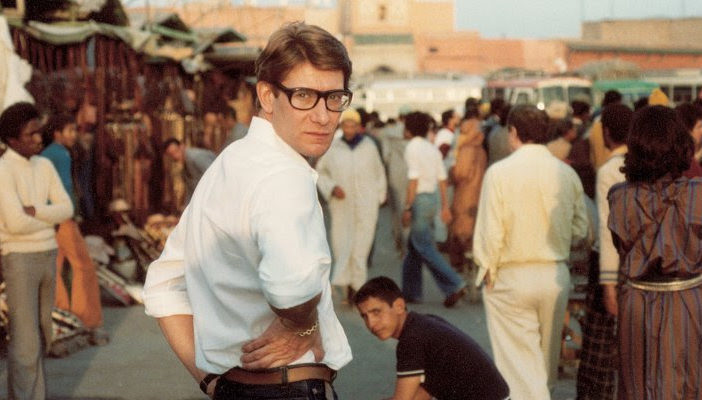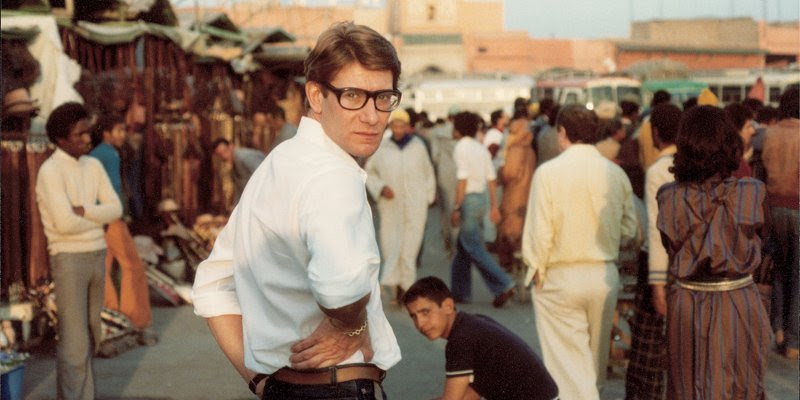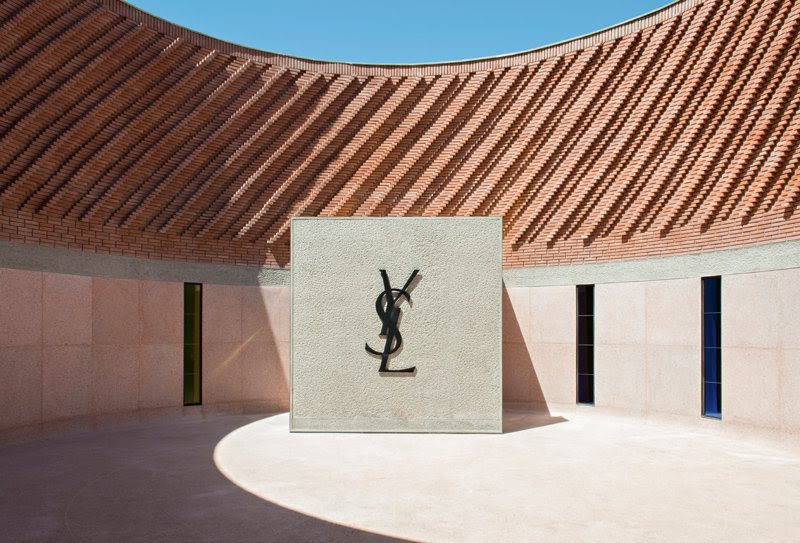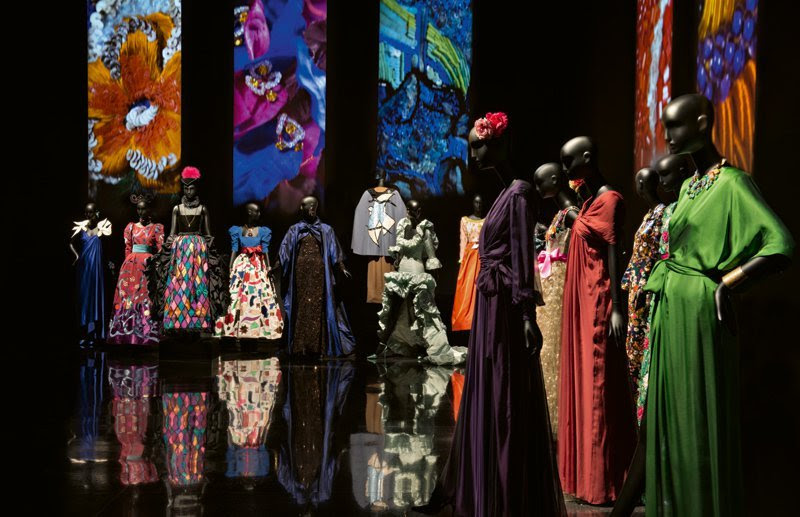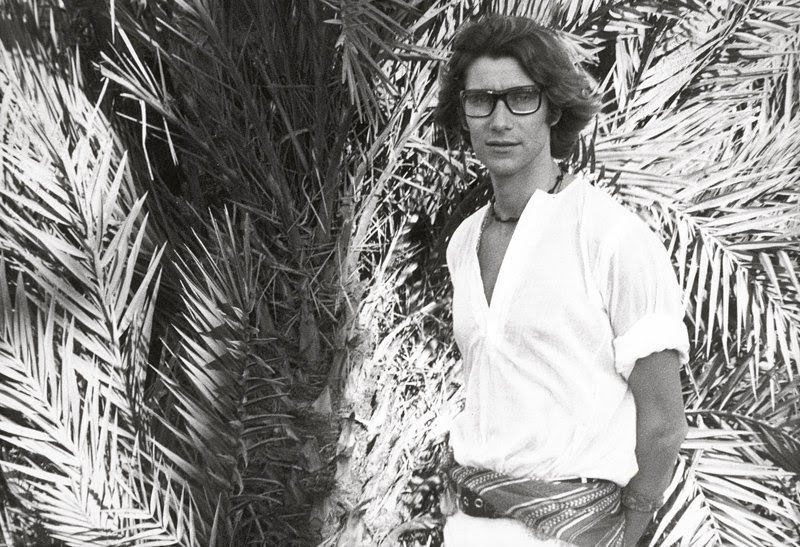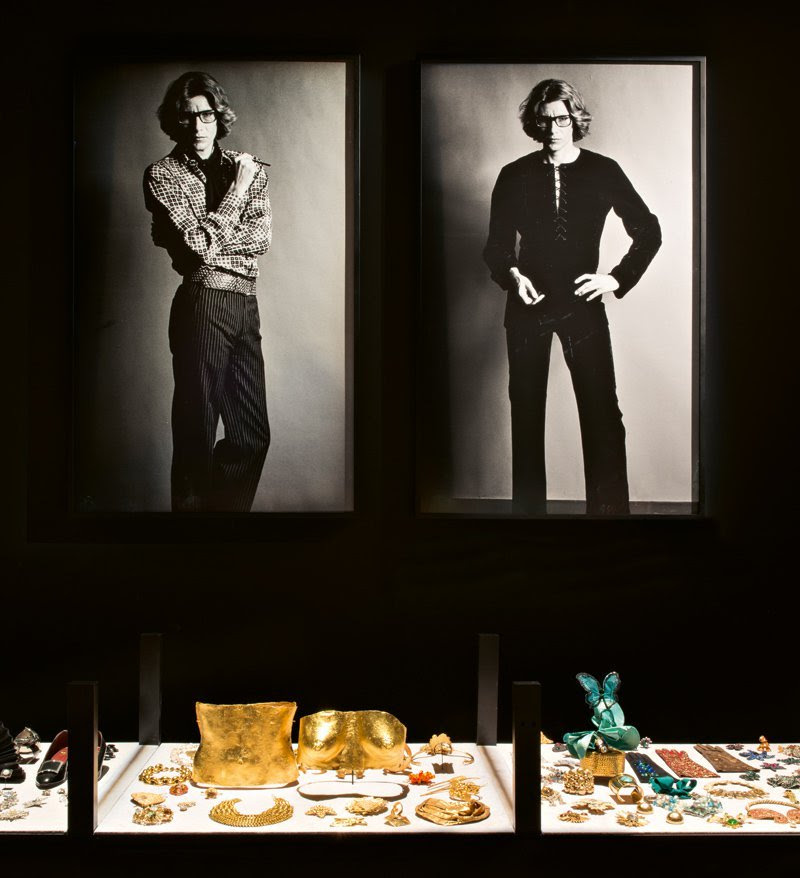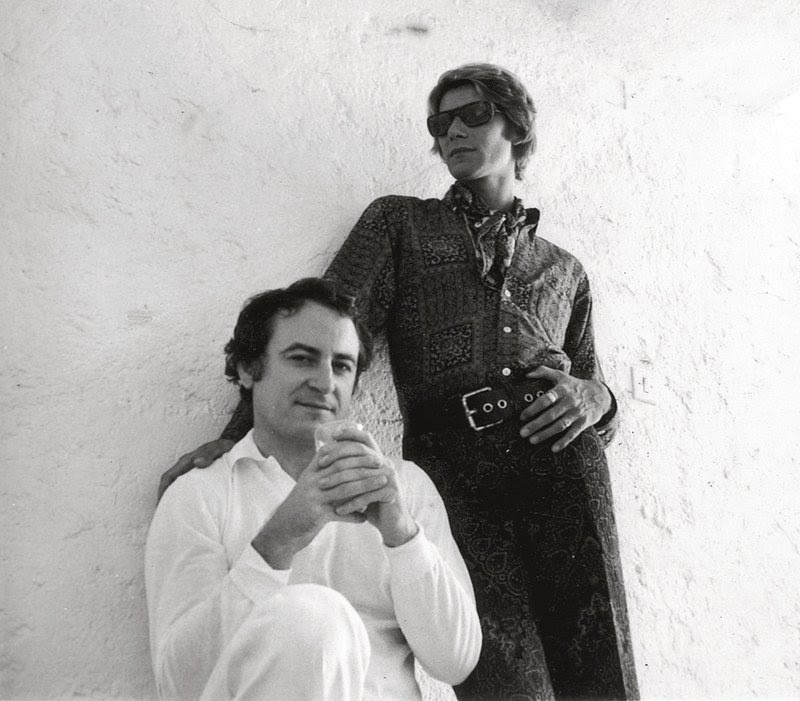Emirates women
When he first visited the North African city of Marrakech in 1966, Yves Saint Laurent fell in love with it totally and completely. Not only was he changed by Morocco, but through him, the country altered and enhanced the future of fashion. Saint Laurent, who always credited it for opening his eyes to colour, said in 1983: “In Morocco, I realised that the range of colours I use was that of the zelliges, zouacs, djellabas and caftans. The boldness seen since then in my work, I owe to this country, to its forceful harmonies, to its audacious combinations, to the fervour of its creativity. This culture became mine, but I wasn’t satisfied with absorbing it; I took, transformed and adapted it.”
The autumn of 2017 has seen the launch of two museums dedicated to the iconic late designer, who was born in French Algeria, both in cities he adopted as an adult. In September the Musée Yves Saint Laurent opened in Paris, where he started his fashion career. And in October, the Musée Yves Saint Laurent, or mYSLm, opened in Marrakech, where his ashes were spread after his death in 2008.
Read:
‘Women have to work much harder than men,’ says this Palestinian director
These are the local style influencers you should be following for 2018
The mYSLm spans the 40 years Saint Laurent spent changing fashion, from 1962 until he retired in 2002, featuring more than 1,000 pieces from his studio, including dozens of couture items, which will be rotated regularly, and an assortment of accessories, film, photographs and sketches.
So many basic fashion concepts of today stem from the French fashion genius that it boggles the mind: women wearing trousers, black as a fashion ‘colour’, the tuxedo suit, the pea and safari coat. That legacy has proven powerful, with the museum attracting 1,800 visitors per day from all over the world since opening.
“We are curious about what people are feeling about this project, but they are mostly saying it’s about love and emotion,” says Björn Dahlström, mYSLm’s director. “And beauty.”
Saint Laurent wasted no time putting down roots in Marrakech, buying first the cobalt-blue villa next to the Jardins Majorelle, which is just steps away from the mYSLm, and a further two properties.
“He was spending, twice a year, two weeks here in Marrakech to design his collection,” says Dahlström. “Then he would travel back with his sketches under his arm to have them produced in Paris.”
The project has been in the works for several years, ever since Saint Laurent’s late life and business partner Pierre Berge (who was able to see the finished project before he passed away in September) was prompted to buy land that became available beside the Jardins Majorelle, which Berge and Saint Laurent rescued from demolition in 1980. Although it all came together in recent years, the idea of commemorating Saint Laurent’s life this way goes back decades, says Dahlström.“It started in the 1960s, when Pierre and Yves Saint Laurent started to conserve the prototypes they were forming for the fashion shows,” he explains. “And even in the 1980s Yves Saint Laurent did mention the word museum on a sketch.” While the Paris museum is more of an ode to the business of producing fashion, or a chronological history, the mYSLm is devoted to the inspiration behind some of his most groundbreaking work. The exhibition space, which is 400 square metres, was designed by scenographer Christophe Martin. Key pieces include Saint Laurent’s “le smoking” and safari jackets, and the pea coat, as well as a dress from the 1964 Mondrian collection, which featured abstract prints from the Dutch painter Piet Mondrian. The pieces are organised into themes plucked from Saint Laurent’s work including, of course, Africa and Morocco, but also Art, Gardens, Black, Masculine-Feminine and Imaginary Voyages.
“It is not a retrospective, but rather a voyage to the heart of his work,” Martin told the website Dezeen.com. “More that 50 garments, most never before seen, are displayed in an understated environment, one without affectation, which accompanies and underscores the work. An immense, luminous and radiating portrait of Yves Saint Laurent envelopes the garments.”
Dahlström explains the museum’s collection is not always literal, “but many, many little things that combine together that give a hint of Morocco”.
He is partial to a look from 1981, which was inspired by the 1947 Matisse painting, ‘The Romanian Blouse’, as well as Morocco, because the woman is wearing a tarbouche – the classic Moroccan men’s hat Saint Laurent loved to place on women – and a beautiful blue velvet skirt.
Many of the items are spot-lit against black walls, the simplicity providing a nice contrast to Saint Laurent’s often joyous use of colour. Audio of the designer and some of his muses, music and digital projections featuring key moments from throughout his career, help to knit the viewing experience together. “They are hooking all Saint Laurent’s inspiration with Saint Laurent’s voice, Catherine Deneuve’s voice, extracts from movies and shows,” explains Dahlström. “And the whole thing really makes it a very moving and sensorial experience.”
The museum features a ‘Curiosity Cabinet’, displaying some of the more precious objects. There visitors can find Saint Laurent’s S/S 1988 sunflower-covered Van Gogh jacket, as well as hundreds of accessories including shoes, gloves and the chunky jewellery of the Berber tribe.
The building itself, which is reported to have cost US$17 million, was designed by the well-established Marrakech duo Studio KO architects.
“The idea was to root the building in Morocco by working with two architects – Karl Fournier and Olivier Marty – who have an office here in Marrakech,” explains Dahlström. “They know Morocco very well, they’ve been working here for 20 years and when Pierre Berge asked them to do that project, he had very simple but strong specifications. They were to produce something that was very contemporary but also something very Moroccan.”
The earth-toned exterior bricking was assembled to evoke the “werp and weft of fabric”, and due to its colour, the building manages to look incredibly modern while still blending easily with the older architecture in what is often called the Ochre City. Inside, Dahlström explains, there are a series of “surprises” for visitors. “It’s very opaque from the exterior, it’s inspired by a traditional old city Marrakech house, you can’t see anything,” he says. “As soon as you get in, you go through many spaces, different courtyards…I think the whole thing is quite an experience.”
Read:
Seven hijab styling tips we’ve picked up from Halima Aden
Jessica Chastain’s love affair with Middle Eastern designers continues
The museum’s first temporary exhibit features the work of the late French painter Jacque Majorelle, who spent 40 years creating the 486-hectare botanical gardens, beside the mYSLm, before his death in 1962. Today they are one of the most visited spots in Morocco. There is a 6,000-volume library showcasing an assortment of books on the Berber people, Islamic and Arab-Andalusian culture, botany and fashion, as well as many volumes donated by Berge on the history of the country. There are also plans for an annual exhibit showing a photographer who worked with Saint Laurent, starting with “thirty years of the Fashion House in Marrakech”, featuring photographs by Andre Rau published in a 1992 edition of the French Elle magazine. Rau recalled Yves Saint Laurent speaking about his love of Marrakech one day on a shoot. The series was born when the then-editor of Elle Magazine, Anne-Marie Perier, asked Rau to record the 30th anniversary of the YSL fashion house. “Marrakech immediately came to mind,” he remembers. “The element of surprise is very important in photography. One doesn’t expect to see Catherine Deneuve in an out-of-the-way barber shop, or dressed in ‘le smoking’ in the middle of a teeming marketplace.”
Six fashion museums to visit
Musée Yves Saint Laurent – Paris, France
Crowds lined up on opening day in September to get a look inside this museum, which is located at 5 Avenue Marceau in Paris’s 16th arrondissement, in the atelier where Yves Saint Laurent worked for almost three decades. Mixed in with the jewellery, swatches, and couture pieces, not to mention an Andy Warhol portrait of the designer, is what several reviewers have called “the” highlight: Saint Laurent’s actual office, with his desk just as he last left it, with sketches, several paperweights and an old issue of Women’s Wear Daily.




